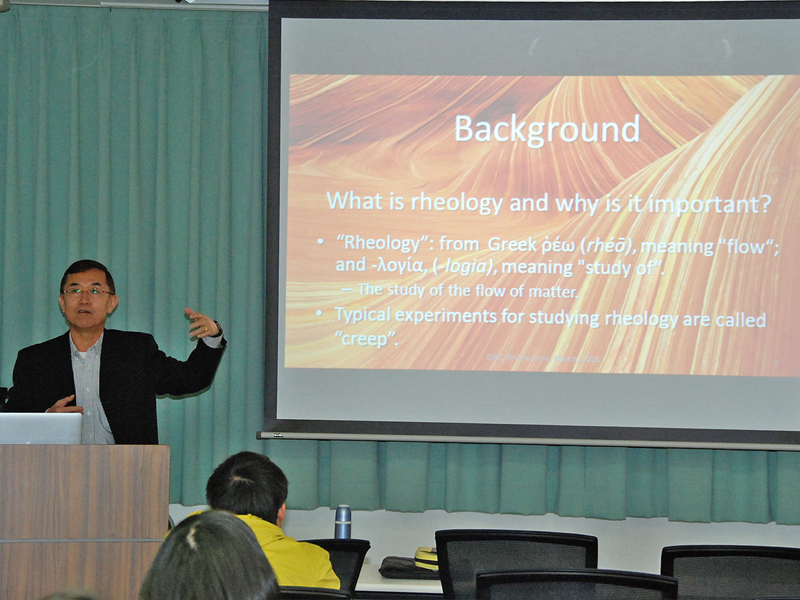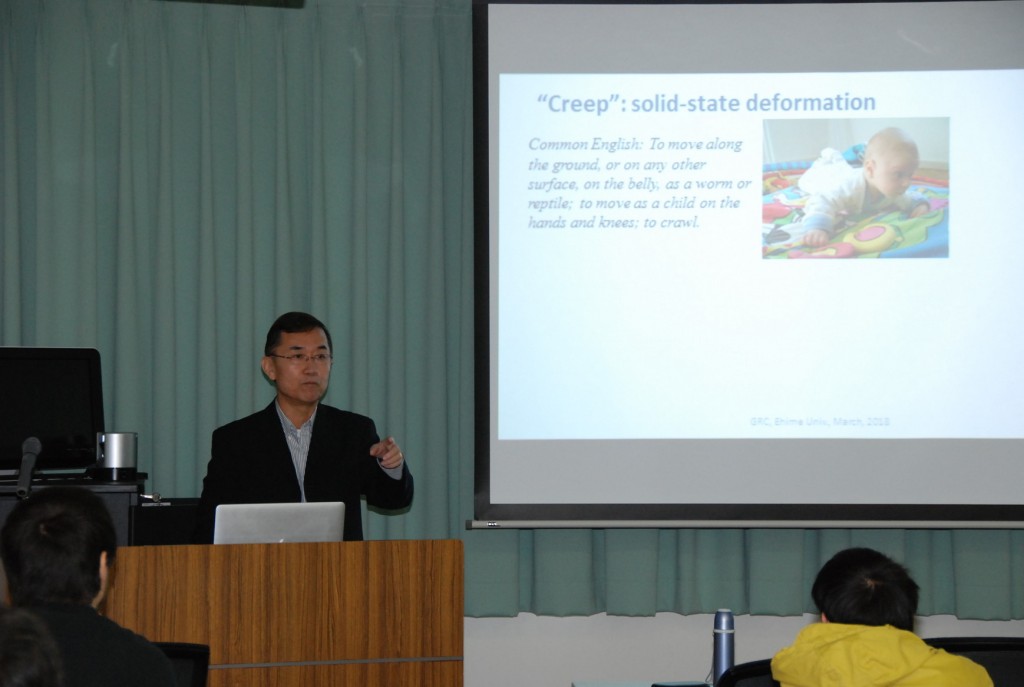2018年3月22・23日に、愛媛大学において、Yanbin Wang教授(University of Chicago)による国際フロンティアレクチャーを開催いたしました。

講義ノートはこちら
<受講者の声>
Prof. Yanbin Wang’s lecture and the International Symposium and FY2017 Annual General Meeting were impressive. The lectures contained two topics: the ductile deformation and melt structure and physical properties under high-pressure and temperature. I learned the basic concepts, experimental devices and latest progresses of these two area. In the Annual General Meeting, I gave a presentation entitled: Silicate melt viscosities at high pressure: Constraints on Magma Ocean. I was also impressed by the achievements and the interdisciplinary corporations in the Core-Mantle co-evolution project. Longjian Xie (IPM, Okayama University, DC3)

GRC & MEXT Shin-Gakujutsu “Core-Mantle Coevolution”
International Frontier Lecture
| 日時 | 2018年3月22(木)-23日(金) |
| 場所 | 愛媛大学総合研究棟I会議室#486 |
| 講師 | Prof. Yanbin Wang (University of Chicago) |
| 題目 | Recent Advancements in Multi-anvil High-pressure Science |
| 要旨 |
High-pressure rheology – ductile deformation This lecture will cover some fundamentals of ductile deformation of materials under high-pressure and temperature, with particular emphasis on earth science applications. We will start with a brief historical recount of the development of theories on defects, which are responsible for plastic deformation of crystalline materials. Various deformation mechanisms will be discussed along these lines. Then an overview of experimental devices will be given for high-pressure deformation studies, especially pros and cons of each experimental approach. Principles of studying deformation in crystalline materials using x-ray diffraction will be emphasized, with some detailed discussions on stress measurements using both the energy-dispersive and angle dispersive methods and quantification of lattice preferred orientation due to deformation. Some basics of polycrystal elasto-plastic self-consistent modeling will be covered to help understand the physical processes of plastic deformation. Highlights of scientific research will be given, primarily based on experimental results from my laboratory, to illustrate the current status of this field, from subducting slabs to the deep mantle. Implications to dynamic processes in the earth will be discussed. Silicate melts under high pressure: Structures and physical properties Silicate liquids play fundamental roles in defining mineralogy and dynamic processes in the interiors of the earth and other planets. This lecture concerns with the understanding of structures and physical properties of silicate liquids under pressure. Properties such as density and viscosity depend on the liquid structure, which undergoes various changes under compression. It is difficult to study liquid structures at high pressures, and the correlation between structure and properties remains poorly known. In this lecture we begin with a general background of what has been known about density and viscosity of silicate liquids, followed by a historical recount of the development of diffraction theories for understanding the amorphous nature of liquid structures. Experimental techniques are then reviewed for both structure and property (density, elasticity, and viscosity) measurements. We then examine in details some simple silicate liquids and glasses, which help provide important insights as to (1) how compression of the SiO4 tetrahedral network may affect density and viscosity of liquids in the upper mantle, and (2) how extreme compression can change liquid density. A possible approach to establishing an experiment based equation of state for liquids over a wide range of pressure will also be reviewed. |
| 問い合わせ | A04-1 土屋卓久 |




